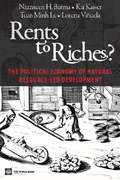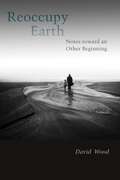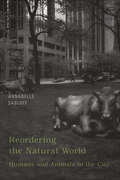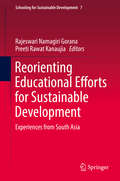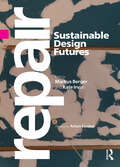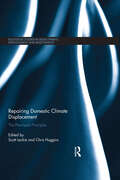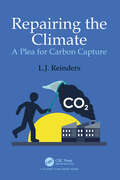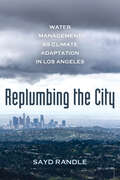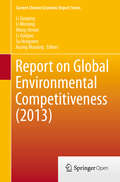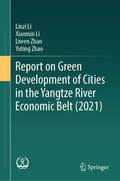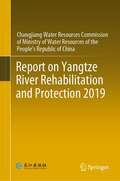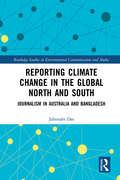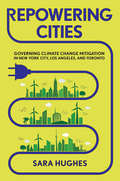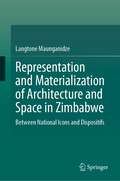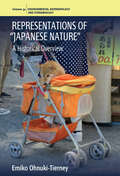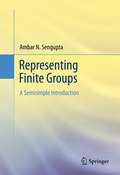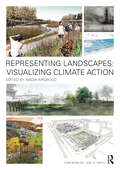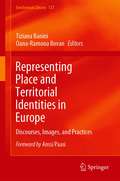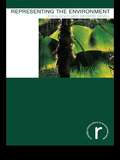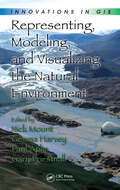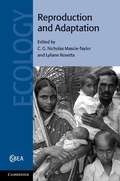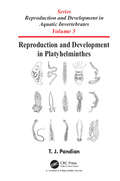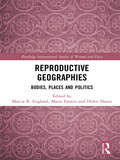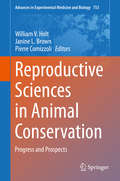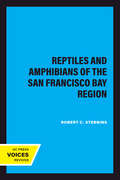- Table View
- List View
Rents to Riches? The Political Economy of Natural Resource-Led Development
by Naazneen H. Barma Kai Kaiser Tuan Minh Le Lorena ViñuelaThis volume focuses on the political economy surrounding the detailed decisions that governments make at each step of the value chain for natural resource management. From the perspective of public interest or good governance, many resource-dependent developing countries pursue apparently short-sighted and sub-optimal policies in relation to the extraction and capture of resource rents, and to spending and savings from their resource endowments. This work contextualizes these micro-level choices and outcomes.
Reoccupy Earth: Notes toward an Other Beginning (Groundworks: Ecological Issues in Philosophy and Theology)
by David WoodHabit rules our lives. And yet climate change and the catastrophic future it portends, makes it clear that we cannot go on like this. Our habits are integral to narratives of the good life, to social norms and expectations, as well as to economic reality. Such shared shapes are vital. Yet while many of our individual habits seem perfectly reasonable, when aggregated together they spell disaster. Beyond consumerism, other forms of life and patterns of dwelling are clearly possible. But how can we get there from here? Who precisely is the ‘we’ that our habits have created, and who else might we be? Philosophy is about emancipation—from illusions, myths, and oppression. In Reoccupy Earth, the noted philosopher David Wood shows how an approach to philosophy attuned to our ecological existence can suspend the taken-for-granted and open up alternative forms of earthly dwelling. Sharing the earth, as we do, raises fundamental questions about space and time, place and history, territory and embodiment—questions that philosophy cannot directly answer but can help us to frame and to work out for ourselves. Deconstruction exposes all manner of exclusion, violence to the other, and silent subordination. Phenomenology and Whitehead’s process philosophy offer further resources for an ecological imagination. Bringing an uncommon lucidity, directness, and even practicality to sophisticated philosophical questions, Wood plots experiential pathways that disrupt our habitual existence and challenge our everyday complacency. In walking us through a range of reversals, transformations, and estrangements that thinking ecologically demands of us, Wood shows how living responsibly with the earth means affirming the ways in which we are vulnerable, receptive, and dependent, and the need for solidarity all round.If we take seriously values like truth, justice, and compassion we must be willing to contemplate that the threat we pose to the earth might demand our own species’ demise. Yet we have the capacity to live responsibly. In an unfashionable but spirited defense of an enlightened anthropocentrism, Wood argues that to deserve the privileges of Reason we must demonstrably deploy it through collective sustainable agency. Only in this way can we reinhabit the earth.
Reordering the Natural World: Humans and Animals in the City
by Annabelle SabloffIn Reordering the Natural World, Annabelle Sabloff argues that the everyday practices of contemporary capitalist society reinforce the conviction that we are profoundly alienated from the rest of nature. At the same time, she reveals the often disguised affinities and sense of connection urban Canadians manifest in their relations with animals and the natural world.Sabloff reflects on how the discipline of anthropology has contributed to the prevailing Western perception of a divide between nature and culture. She suggests that the present ecological crisis has resulted largely from the ways in which Western societies have construed nature as a cultural system. Since new ideas about nature may be critical in changing humanity's destructive interactions with the biosphere, Reordering the Natural World is invaluable in exploring how urban Canadians develop and sustain their current relationship with the macrocosm, and in considering whether these relationships might be altered by reconceptualizing anthropology itself as an integral part of natural history. With this unique text, Sabloff not only provides provocative insight into the study of relations between humans and the natural world, she lays the cornerstone for building an entirely new structure for the study of anthropology itself.
Reorienting Educational Efforts for Sustainable Development
by Rajeswari Namagiri Namagiri Gorana Preeti Rawat Rawat KanaujiaEducation in South Asia has a renewed agenda which can enable societies to leapfrog development that is sustainable such that the individual is prepared for his/her involvement, responsibility and commitment to local and global discussions of our common future. This book on South Asia will focus on initiatives under the Education for Sustainable Development (ESD) umbrella and discuss the challenges, opportunities, issues and strategies in the countries of the region. It presents these initiatives of Environmental Education/ESD vis-à-vis the administrative, economic, social, cultural and ecological realities of each country at various levels of policy, planning, implementation and evaluation. The discussions in this book extend beyond formal education systems like schools, higher education, pre-service and in-service teacher preparation to community education and education initiatives conceptualized with the goal of sustainability. All initiatives will demonstrate how each country in its own pace contributing to move ESD from the periphery to the core of education initiatives.
Repair: Sustainable Design Futures
by Markus Berger Kate IrvinA collection of timely new scholarship, Repair: Sustainable Design Futures investigates repair as a contemporary expression of empowerment, agency, and resistance to our unmaking of the world and the environment. Repair is an act, metaphor, and foundation for opening up a dialogue about design’s role in proposing radically different social, environmental, and economic futures. Thematically expansive and richly illustrated, with over 125 visuals, this volume features an international, interdisciplinary group of contributors from across the design spectrum whose voices and artwork speak to how we might address our broken social and physical worlds. Organized around reparative thinking and practices, the book includes 30 long and short chapters, photo essays, and interviews that focus on multiple responses to fractured systems, relationships, cities, architecture, objects, and more. Repair will encourage students, academics, researchers, and practitioners in art, design and architecture practice and theory, cultural studies, environment and sustainability, to discuss, engage, and rethink the act of repair and its impact on our society and environment.
Repairing Domestic Climate Displacement: The Peninsula Principles (Routledge Studies in Development, Displacement and Resettlement)
by Scott Leckie Chris HugginsClimate change, sometimes thought of as a problem for the future, is already impacting people’s lives around the world: families are losing their homes, lands and livelihoods as a result of sea level rise, increased frequency and intensity of storms, drought and other phenomena. Following several years of preparatory work across the globe, legal scholars, judges, UN officials and climate change experts from 11 countries came together to finalise a new normative framework aiming to strengthen the right of climate-displaced persons, households and communities. This resulted in the approval of the Peninsula Principles on Climate Displacement within States in August 2013. This book provides detailed explanations and interpretations of the Peninsula Principles and includes in-depth discussion of the legal, policy and programmatic efforts needed to uphold the standards and norms embedded in the Principles. The book provides policy-makers with the conceptual understanding necessary to ensure that national-level policies are in place to respond to the climate displacement challenge, as well as a firm sense of the programme-level approaches that can be taken to anticipate, reduce and manage climate displacement. It also provides students and policy advocates with the necessary information to debate and critique responses to climate displacement at different levels. Drawing together key thinkers in the field, this volume will be of great relevance to scholars, lawyers, legal advisors and policy-makers with an interest in climate change, environmental policy, disaster management and human rights law and policy.
Repairing the Climate: A Plea for Carbon Capture
by L.J. ReindersClimate change is triggered by a too high concentration of greenhouse gases in the air, carbon dioxide in particular, primarily originating from fossil fuel-burning. Since such burning will not stop any time soon, the concentration will undoubtedly rise further, exacerbating climate change. There is no escape from this. That is where carbon capture comes in: direct air capture (DAC) scrubs the surplus carbon dioxide out of the air for actually lowering this concentration. At the same time emission levels must be drastically lowered by fitting point-source emitters with carbon capture installations. This book sets out the case for such carbon capture, which is a must, without which the climate cannot be repaired.
Replumbing the City: Water Management as Climate Adaptation in Los Angeles
by Sayd RandleMoving between shower drains, aqueducts, rain gardens, and even kitchen sinks, Replumbing the City traces the enormous urban waterscape of Los Angeles in a state of flux. For more than a century, the city of Los Angeles has relied on faraway water for the vast majority of its municipal supply, but climate change is making these distant sources much less dependable. To adapt, Angelenos—including city engineers, advocates at NGOs, and residents—are developing new water supplies within the space of the city. Sayd Randle’s ethnography examines the labor of replumbing LA’s sprawling water system, detailing how a desire to sustain unlimited and uninterrupted water provision for paying customers is reshaping the urban environment and its management. Tracking how such projects redistribute the work of water management, the book explores thorny questions of how the labor of climate adaptation should be mobilized and valued.
Report on Global Environmental Competitiveness
by Li Jianping Li Minrong Wang Jinnan Li Jianjian Su Hongwen Huang MaoxingThis book explores the environmental competitiveness of 133 countries around the world, presenting an index evaluation system to facilitate a comparative analysis of environmental competitiveness on a global scale. This is a new way to measure competitiveness in the light of the contradiction between world economic development and environmental protection. Global environmental competitiveness covers five aspects: the ecological environment, resources environment, environmental management, environmental impacts and environmental coordination. The authors use longitudinal study and horizontal analysis, combining qualitative and quantitative analysis methods so as to conduct an in-depth study of theoretical, empirical and methodological issues of global environmental competitiveness. The work is presented here in three main parts beginning with the theory, technical road-map and analytical approach used. The second part reports on the countries as evaluation objects, analyzing the development status of global environmental competitiveness as a whole and revealing the strengths and weaknesses of each country's environmental competitiveness. Basic paths and strategies to enhance the competitiveness level are presented. In the third part the reader will discover a sub-report and evaluation of the environmental competitiveness for 133 countries around the world, revealing the characteristics and relative differences of countries representing different levels of development, in order to provide an important decision-making reference to those considering environmental economic policies, especially those considering accelerating a green economic transformation and enhancing environmental competitiveness. This book will appeal to scholars and professionals with an interest in environmental issues and environmental competitiveness at a global level, as well as those with an interest in each of the 133 countries analyzed in this text, including environmental policy makers in those countries.
Report on Green Development of Cities in the Yangtze River Economic Belt (2021)
by Yuting Zhao Linzi Li Xiaomin Li Liwen ZhanThe report aims to help the cities in the Yangtze River Economic Belt of China identify their potentials for green development, especially to find their own suitable green development paths. Based on the evaluation, six green development models that can be replicated and promoted are initially established by selecting typical cities as pilot. The report is the first volume of its series and will be updated annually with more abundant green development models.
Report on Yangtze River Rehabilitation and Protection 2019
by CWRCThis book summarizes the achievements and experience of the Yangtze River rehabilitation and protection, analyzes the new situation and requirements of the Yangtze River rehabilitation and protection, and discusses the main issues and their solution alternatives for the Yangtze River rehabilitation and protection efforts. The Yangtze River, respected as the mother river of the Chinese nation, contributes immensely toward the socioeconomic development of China and braces up the national strategies such as the development of the Yangtze River Economic Belt and the integrated development of the Yangtze River Delta, etc. Whether the Yangtze River is under good stewardship has implications on not only the wellbeing of more than 400 million inhabitants in the basin, but also in broader sense the overall sustainability of socioeconomic development of the whole country. This book which has two parts, provides a multidirectional analysis of Yangtze River rehabilitation and protection. The first part explores the stages, achievements, and the future of the Yangtze rehabilitation and protection. Major issues existing in Yangtze River Basin rehabilitation and protection are discussed in the second part. Many pictures, charts, and diagrams are involved providing an understanding of the situation of Yangtze River Basin.
Reporting Climate Change in the Global North and South: Journalism in Australia and Bangladesh (Routledge Studies in Environmental Communication and Media)
by Jahnnabi DasThis book reveals how journalists in the Global North and Global South mediate climate change by examining journalism and reporting in Australia and Bangladesh. This dual analysis presents a unique opportunity to examine the impacts of media and communication in two contrasting countries (in terms of economy, income and population size) which both face serious climate change challenges. In reporting on these challenges, journalism as a political, institutional, and cultural practice has a significant role to play. It is influential in building public knowledge and contributes to knowledge production and dialogue, however, the question of who gets to speak and who doesn’t, is a significant determinant of journalists’ capacity to establish authority and assign cultural meaning to realities. By measuring the visibility from presences and absences, the book explores the extent to which the influences are similar or different in the two countries, contrasting how journalists’ communication power conditions public thought on climate change. The investigation of climate communication across the North-South divide is especially urgent given the global commitment to reduce greenhouse gas emissions and it is critical we gain a fuller understanding of the dynamics of climate communication in low-emitting, low-income countries as much as in the high emitters, high-income countries. This book contributes to this understanding and highlights the value of a dual analysis in being ably draw out parallels, as well as divergences, which will directly assist in developing cross-national strategies to help address the mounting challenge of climate change. This book will be of great interest to students and scholars of climate change and environmental journalism, as well as media and communication studies more broadly.
Repowering Cities: Governing Climate Change Mitigation in New York City, Los Angeles, and Toronto
by Sara HughesCity governments are rapidly becoming society's problem solvers. As Sara Hughes shows, nowhere is this more evident than in New York City, Los Angeles, and Toronto, where the cities' governments are taking on the challenge of addressing climate change.Repowering Cities focuses on the specific issue of reducing urban greenhouse gas (GHG) emissions, and develops a new framework for distinguishing analytically and empirically the policy agendas city governments develop for reducing GHG emissions, the governing strategies they use to implement these agendas, and the direct and catalytic means by which they contribute to climate change mitigation. Hughes uses her framework to assess the successes and failures experienced in New York City, Los Angeles, and Toronto as those agenda-setting cities have addressed climate change. She then identifies strategies for moving from incremental to transformative change by pinpointing governing strategies able to mobilize the needed resources and actors, build participatory institutions, create capacity for climate-smart governance, and broaden coalitions for urban climate change policy.
Representation and Materialization of Architecture and Space in Zimbabwe: Between National Icons and Dispositifs
by Langtone MaunganidzeThis volume is an empirical study examining the extent to which historic and iconic architecture and spaces in Zimbabwe - particularly in urban areas - have been mobilized to construct and reconstruct identities. The author explores the question of traditional and political architecture through analysis of a variety of structures, including monuments, museums, and indigenous and state buildings. Special attention is paid to the soapstone-carved Zimbabwe Bird, which for years has served as the national emblem. Overall, this book argues that while the production and use of architectural products and spaces have been regarded symbols of collective identity, they have also served as expressions of power and control.
Representations of “Japanese Nature”: A Historical Overview (Environmental Anthropology and Ethnobiology)
by Emiko Ohnuki-Tierney“Nature” as a concept and word is extremely elusive, yet it is commonly taken for granted that “the pristine nature” is “out there.” This book explores the factors that have naturalized the idea of nature as “pristine” into our psyche, and as something that has a spatial, visual, and temporal dimension for “seasons”. Much emphasis is given to the inhabitants demonstrating the dynamic characteristic of nature. As a study done over a long period of history, Representations of “Japanese Nature” shows the mutual support between conceptual principles of nature and the daily activities of the people .
Representing Finite Groups
by Ambar N. SenguptaThis graduate textbook presents the basics of representation theory for finite groups from the point of view of semisimple algebras and modules over them. The presentation interweaves insights from specific examples with development of general and powerful tools based on the notion of semisimplicity. The elegant ideas of commutant duality are introduced, along with an introduction to representations of unitary groups. The text progresses systematically and the presentation is friendly and inviting. Central concepts are revisited and explored from multiple viewpoints. Exercises at the end of the chapter help reinforce the material. Representing Finite Groups: A Semisimple Introduction would serve as a textbook for graduate and some advanced undergraduate courses in mathematics. Prerequisites include acquaintance with elementary group theory and some familiarity with rings and modules. A final chapter presents a self-contained account of notions and results in algebra that are used. Researchers in mathematics and mathematical physics will also find this book useful. A separate solutions manual is available for instructors.
Representing Landscapes: Visualizing Climate Action (Representing Landscapes)
by Nadia AmorosoThis book provides an in-depth overview of graphic and visual communication styles for conveying climate change and climate action within the landscape architectural profession and in academia. The book features visualizations of climate adaptation and resilience, developed by award-winning landscape architects and academics from Canada, the United States, the United Kingdom, The Netherlands, Denmark, Germany, Italy, France, Finland, South Africa, Singapore, and China. Representing Landscapes: Visualizing Climate Action illustrates the imaginative ways in which climate action and climate resilient concepts are visually presented, communicated, and perceived. The book will be especially valuable for students and practitioners in landscape architecture, urban planning, and related fields to understand how to visually capture climate change issues and design solutions, and to deliver this message to the public.
Representing Place and Territorial Identities in Europe: Discourses, Images, and Practices (GeoJournal Library #127)
by Tiziana Banini Oana-Ramona IlovanThis book provides insight into the topic of place and territorial identity, which involves both the dimension of collective belonging and the politics of territorial planning and enhancement. It considers the social, economic and political effects of territorial identity representations among others in terms of mystification, spatial fetishism, and the creation of place and territorial stereotypes. A mixed methodology is employed to research case studies at diverse territorial scales which are relevant to the impact of a variety of factors on place/territorial identity processes such as migration, political and economic changes, natural disasters, land use changes, etc. Visual imagery, constructing visual discourses and living within visual cultures are placed in the foreground and refer to among others the changes and challenges introduced by the Internet and social networks in place/territory representations and self-representations; identity politics and its impact on place/territorial identity representations; discourses in shaping representations and self-representations of territorial/place-based identities related to collective memory, cultural heritage, invented tradition, imagined communities and other key notions.
Representing the Environment (Routledge Introductions to Environment: Environment and Society Texts)
by George Revill John R. GoldThe development of the environmental movement has relied heavily upon written and visual imagery. Representing the Environment offers an introductory guide to representations of the environment found in the media, literature, art and everyday life encounters. Featuring case studies from Europe, the Americas and Australia, Representing the Environment provides practical guidance on how to study environmental representations from a cultural and historic perspective, and places the reader in the role of active interpreter. The book argues that studying representations provides an important lens on the development of environmental attitudes, values and decision-making.
Representing, Modeling, and Visualizing the Natural Environment (Innovations in GIS)
by Nick Mount Gemma Harvey Paul Aplin Gary PriestnallThe explosion of public interest in the natural environment can, to a large extent, be attributed to greater public awareness of the impacts of global warming and climate change. This has led to increased research interest and funding directed at studies of issues affecting sensitive, natural environments. Not surprisingly, much of this work has re
Reproduction and Adaptation
by C. G. Mascie-Taylor Lyliane RosettaIn the space of one generation major changes have begun to take place in the field of human reproduction. A rapid increase in the control of fertility and the understanding and treatment of sexual health issues have been accompanied by an emerging threat to reproductive function linked to increasing environmental pollution and dramatic changes in lifestyle. Organised around four key themes, this book provides a valuable review of some of the most important recent findings in human reproductive ecology. Major topics include the impact of the environment on reproduction, the role of physical activity and energetics in regulating reproduction, sexual maturation and ovulation assessment and demographic, health and family planning issues. Both theoretical and practical issues are covered, including the evolution and importance of the menopause and the various statistical methods by which researchers can analyse characteristics of the menstrual cycle in field studies.
Reproduction and Development in Platyhelminthes (Reproduction and Development in Aquatic Invertebrates)
by T. J. PandianThis book is a comprehensive elucidation on aspects of reproduction and development in platyhelminthes covering from acoelids to taeniids. With the unique presence of neoblasts, turbellarians serve as a model for studies on cancer and senescence. Of ~ 27,000 species, ~ 77% are parasites; they are harmful to man and his food basket from livestock and fish. The stress hormone, cortisol level is responsible for susceptibility and resistance of the host. In digeneans, the propagatory multiplication potency is retained by all the larval forms and in either direction in sporocyst. The higher clonal diversity, mixing and selection in Second Intermediate Host (SIH) may purge inbreeding depression suffered by the fluke on propagatory multiplication in First Intermediate Host (FIH). Of 12,012 digeneans, 88% may engage 33,014 potential SIH species. They have the choice to select one among the available/awaiting 3.5 host species. The motility of vertebrate host and euryxenic flexibility/scope for selection of SIH species has increased lineage diversification in digeneans. The life cycle of cestodes is divided into aquatic and terrestrial patterns. The former includes (i) oncosphere and (ii) coracidium types and the latter (iii) hexacanth-cysticercoid, (iv) hexacanth-tetrathyridium and (v) hexacanth-cysticercus types. The share for the oncosphere, coracidium and hexacanth types is 17.0, 29.5 and 46.5%, respectively. The staggering fecundity and adoption of the intermediate host in the herbivorous/insectivorous food chain have enriched Taenioidea as the most (2,264) speciose order. Sex specific genes Smed-dmd 1 and macbol have been identified, and neuropeptides and dipeptides are involved in sexualization. Trematodes are unable to parasitize elasmobranchs, as they cannot suck body fluid/blood containing a high level of urea. Relatively higher fecundity supplemented with propagatory multiplication, incorporation of SIH in 88% species, clonal selection in SIH, and euryxenic flexibility and the widest choice for selection of SIH have led to the highest lineage diversification to render digeneans as the most speciose order in Platyhelminthes.
Reproductive Geographies: Bodies, Places and Politics (Routledge International Studies of Women and Place)
by Helen Hazen Marcia R. England Maria FanninThe sites, spaces and subjects of reproduction are distinctly geographical. Reproductive geographies span different scales - body, home, local, national, global - and movements across space. This book expands our understanding of the socio-cultural and spatial aspects of fertility, pregnancy and birth. The chapters directly address global perspectives, the future of reproductive politics and state-focused approaches to the politicisation of fertility, pregnancy and birth. The book provides up-to-date explorations on the changing landscapes of reproduction, including the expansion of reproductive technologies, such as surrogacy and intrauterine insemination. Contributions in this book focus on phenomenologically-inspired accounts of women’s lived experience of pregnancy and birth, the biopolitics of birth and citizenship, the material histories of reproductive tissues as "scientific objects" and engagements with public health and development policy. This is an essential resource for upper-level undergraduates and graduates studying topics such as Sociology, Geographies of Gender, Women’s Studies and Anthropology of Health and Medicine.
Reproductive Sciences in Animal Conservation
by William V. Holt Janine L. Brown Pierre ComizzoliReproductive biology is more than the development of techniques for helping with too little or too much breeding. While some of the relevant techniques are useful for individual species, technical developments have to be backed up by thorough biological understanding of the background behind the problems. This book is therefore threefold; (1) it provides a snapshot of the state of the art in terms of species-specific reproductive technologies, whether for individual animals or whole taxonomic groups; (2) it sets the reproductive problems in context and emphasizes the links between animal-based problems and the wider world, e. g. reproductive fitness and (3) it looks forward and presents realistic assessments of how effective some of the more recently developed techniques in reproductive technology might be at combating extinctions. This is a wide-ranging book that will be relevant to anyone involved in reproductive biology or in species conservation and provides provide them some useful perspectives about the real utility of current and emerging technologies. It has contributions from experts in reproduction and related fields.
Reptiles and Amphibians of the San Francisco Bay Region (California Natural History Guides #3)
by Robert C. StebbinsThis title is part of UC Press's Voices Revived program, which commemorates University of California Press’s mission to seek out and cultivate the brightest minds and give them voice, reach, and impact. Drawing on a backlist dating to 1893, Voices Revived makes high-quality, peer-reviewed scholarship accessible once again using print-on-demand technology. This title was originally published in 1959.This title is part of UC Press's Voices Revived program, which commemorates University of California Press’s mission to seek out and cultivate the brightest minds and give them voice, reach, and impact. Drawing on a backlist dating to 1893, Voices Revived</DIV
